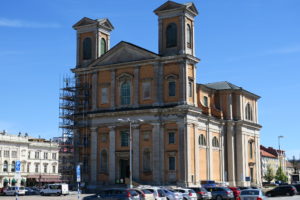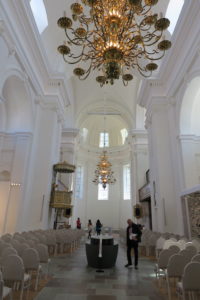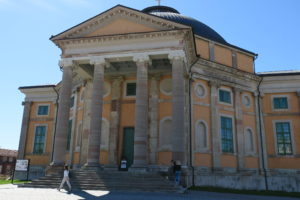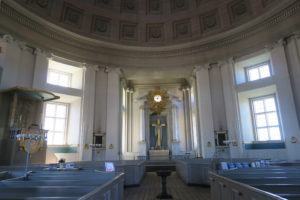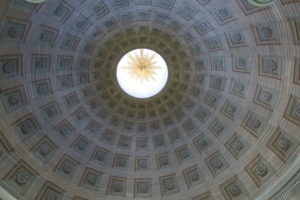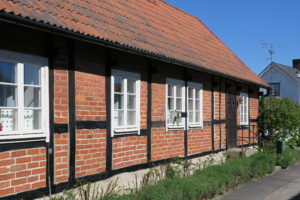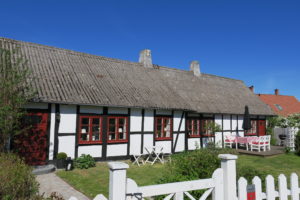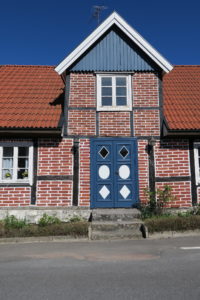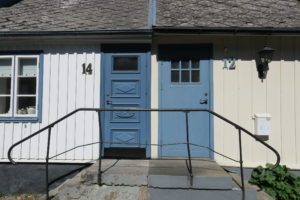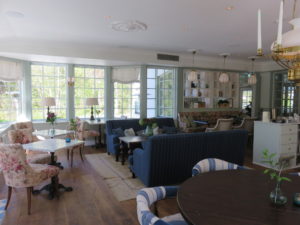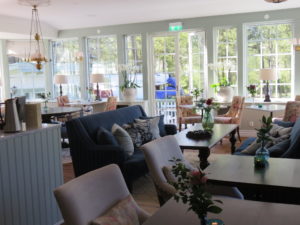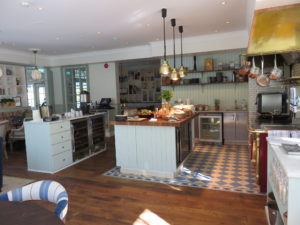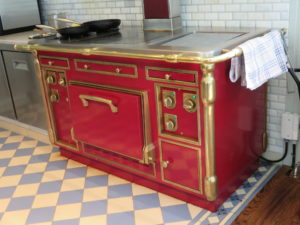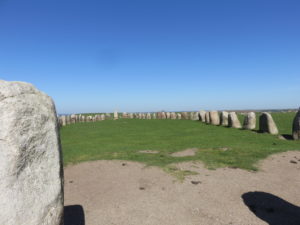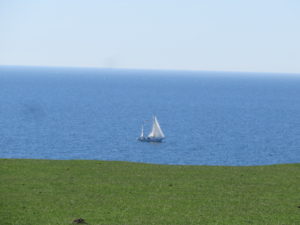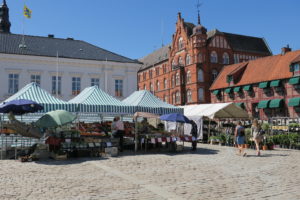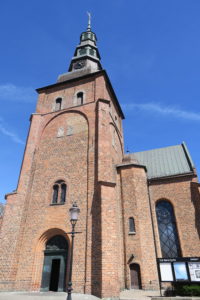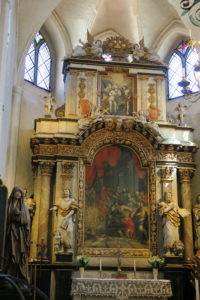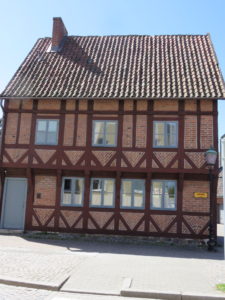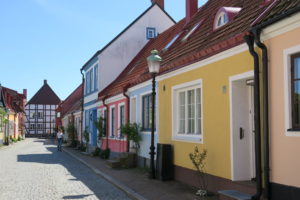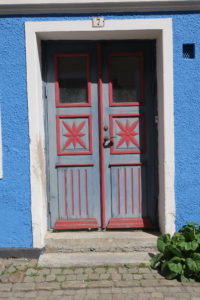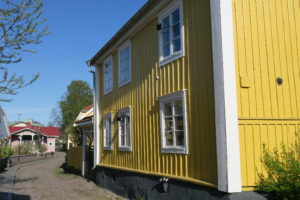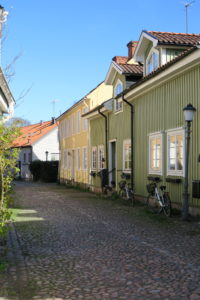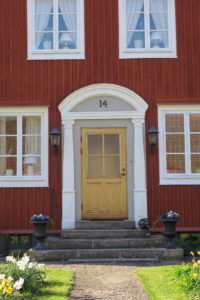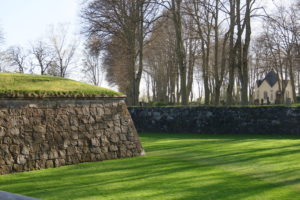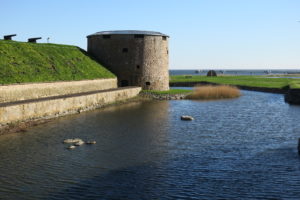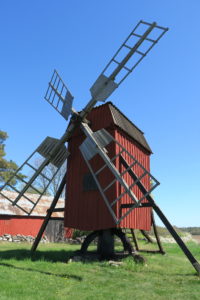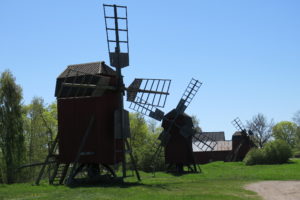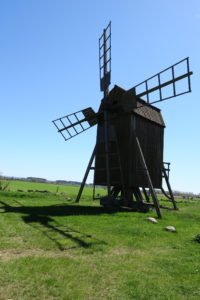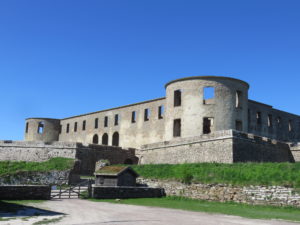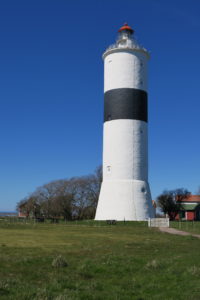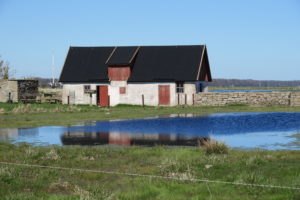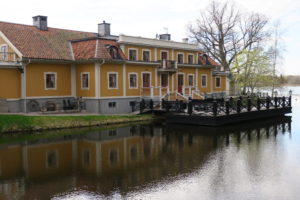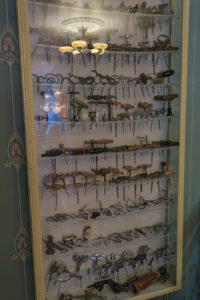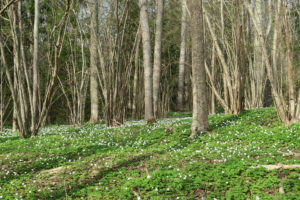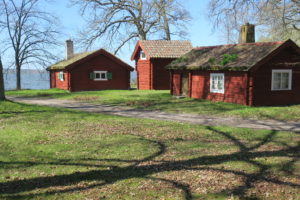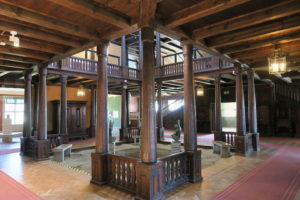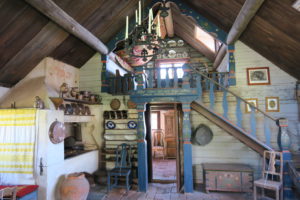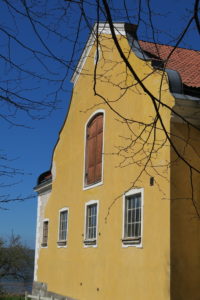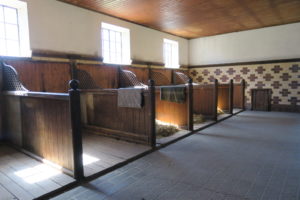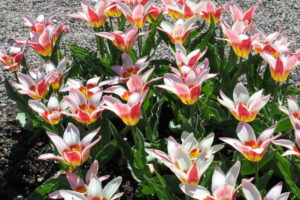Thursday, May 10, was simply a get-from-one-place-to-another kind of day. We had 440km to cover and planned no stops except for gas or “comfort.”
We were leaving the southeast coast behind and heading to Lake Vanern, the largest lake in Sweden and the EU. We would be visiting Lacko Slott, a medieval castle situated on a peninsula in the lake. Not just the peninsula but the castle itself is surrounded on three sides by the lake.
In a significant deviation from our historic hotels pattern, we stayed 2 nights at the visitor center for the castle. “What?” you say. A Naturum is an information center focused on flora and fauna and cultural history of an area. There are 18 in Sweden, and they are registered under the Swedish Environmental Protection Agency. We would call them a combination nature center and visitor center. We had visited a Naturum at the Lange Jan lighthouse and birding center on Oland.
“Our” Naturum was located about 500-600 feet from Lacko Slott. Unlike other Naturums (Natura?), the one at Lacko Slott has 15 rooms on the second floor available for overnight stays. It also has a restaurant in one corner of the nature center. If we were going to make a detour in our historic hotel plan, then this seemed an interesting exception.
Naturum Vaneskargarden

We arrived around 4:00pm. We had to leave our car in the parking lot for the castle and nature center. We then had to traipse those silly bags about half a kilometer, up and down a low hill and around a pond. We were able to use a lift at the center to get the bags up to our room, so for once stairs were not involved in the bag transfer.
The weather was quite warm—upper 70’s—but was forecast to change to showers on Friday. So, as soon as we got settled, we headed over to the castle. It was closed by that time, but the light was good, so we walked around it and to a boat harbor beyond. Jerry had suggested I might want to get some exterior photos before the clouds and/or rain rolled in, and he was right.
Lacko Slott, dubbed the most beautiful castle in Sweden.
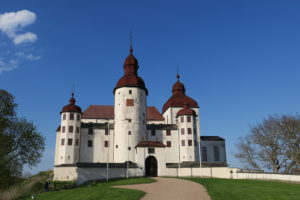
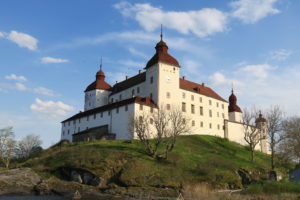
Not wanting to drive 23km back to the nearest town, our option for dinner was the little nature center cafe. Once again, we expected little. With luck, a couple hot dishes, salad, sandwiches. I told Jerry I thought it was a good sign the tables were set with wine glasses and natural linen napkins.
Our low expectations were once again shattered. This Naturum, which is in what they call a biosphere, takes its environmental responsibilities quite seriously and has applied that approach even to the food. The vegetables and herbs come from the castle garden. Everything is extremely local. There were very few choices—a meat, lake perch (from the lake just outside our door), and a vegetarian option; an appetizer and a dessert. As an example, they offered a plate of coppa that they make and air dry themselves, paired with a beer they’ve made from herbs in the garden. (It was served with pickled blueberries (which are really tasty little morsels) and roasted carrot, pickled fennel, and a chive mayonnaise and was really good—as was the beer.) Once again, our underexpectations were quickly set aside.
On Friday morning, we took a guided tour of the castle. Unfortunately, it was done in Swedish, and we had to follow along with a printed guide. That made it feel a bit slow. We had to stay with the group even though we could understand nothing of what was being shared. However, it was an interesting place, with incredible painted walls and ceilings.
The King’s Hall
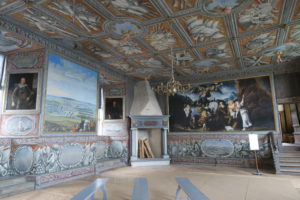
Ceiling in the Austrian Hall
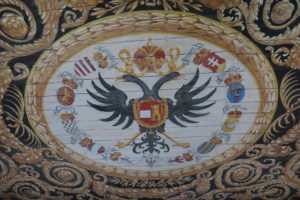
The Dining Hall
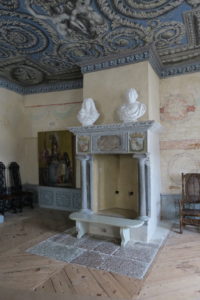
We ducked into the the gift shop after the tour and engaged in a conversation with our tour guide and a man that helped us interpret something. (He had lived in Texas for 3 years and spoke very good English. He was excited about us being from Oregon, because he’d heard Oregon has really good beers.) When we were about to leave, the tour guide looked at us and said, “Why are you in Sweden?” Kind of a funny question, but she was quite earnest. She said people don’t come to Sweden. I think she expected us to say we have family there or something. We explained that we had passed through Sweden 2 years ago but had only seen Stockholm and whatever we could see from the train from Copenhagen or the train to Oslo. We wanted to see more. She was genuinely interested and surprised and said, “Good for you.” Also a funny kind of comment. In truth, we have only bumped into a couple Americans since we left Stockholm. Practically everyone in Sweden speaks English. When they hear us speaking English, they frequently assume we are Brits. So maybe Americans don’t make it to some of these slightly off the beaten path areas. They aren’t lacking in tourists, I assure you, but not necessarily American tourists.
We then drove to the countryside about 35km away to see a historic church that was a favorite of our friends, Andy and Laurie. Husaby Kyrka is adorned with painted ceilings and side panels. A very picturesque place. Two people were leaving as we entered, and several people came in as we left. But we were there on our own, which is a nice way to see a place.
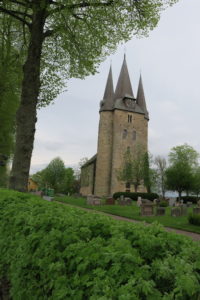

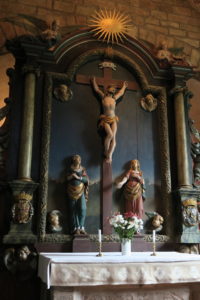
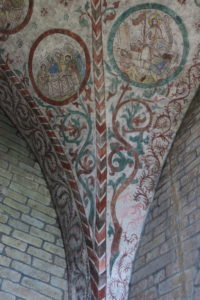
Lacko Slott was a pretty low key stop on our trip, which was fine with us. Besides steeping ourselves in some Swedish history and some pretty spectacular architecture, we had time to walk, take a nap, sit out in the sun and fresh air alongside the lake. Not bad at all.
